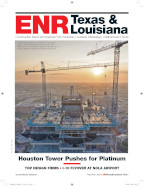The main document, AIA Document A141–2014: Standard Form of Agreement Between Owner and Design-Builder, consists of the agreement portion, an amendment executed when the owner and design-builder agree on the contract sum, and sustainability and insurance exhibits.
A142 is the standard agreement between the design-builder and the contractor. A441 establishes the contractual relationship between a contractor and a subcontractor and provides the option of engaging the subcontractor in a professional-service capacity.
B143 is the agreement between the design-builder and the architect. It does not provide a fixed scope of an architect's services but, instead, includes a menu of possible services and contractual scenarios. If the design-build entity lacks the internal capacity to provide architectural services or is required to contract separately for architectural services by virtue of local license regulations or other legal requirements, the design-build entity can use B143 to enter into an agreement with an architect to perform all the project's architectural services. B143 also can be used in a scenario in which the design-builder directly performs some of the architectural services under its agreement with the owner.
C441 is the agreement between an architect and its design consultant. G744 is a certificate of substantial completion. It requires an owner inspection to determine whether work is substantially complete in accordance with the documents and to identify the completion date.
Also at the convention, the AIA released the latest "AIA Foresight Report," a market survey produced in cooperation with the Greenway Group. More than half of the North American design-firm leaders who responded expect growth this year and next. Similarly, more than half of respondents expect architect-firm merger and acquisition activity to increase.
In addition, the U.S. Bureau of Labor Statistics anticipates approximately 18,600 architecture jobs will be added to the U.S. economy between 2012 and 2022. That represents a greater-than-average growth rate of 17%.
Through market research, AIA also is focusing attention on the effect of building design and construction on occupant health, well-being and productivity. "Design has transformed health," but a lack of awareness in the marketplace of the connection between design and public health is conspiring against public health, said Jessyca Henderson, AIA's managing director of policy and community relations, at the release of "The Drive Toward Healthier Buildings," a collection of market surveys of U.S. health professionals, architects, contractors, owners and human-resource professionals, produced for the AIA by McGraw Hill Construction, ENR's publisher.
"A high percentage of doctors are not making the connection between health and buildings," said Harvey M. Bernstein, McGraw Hill's vice president of industry insights and alliances.
But more owners are making the connection, including 47% of respondents who said healthy buildings lower heath-care costs by 1% to 5%. And healthy buildings improve employee engagement, said 66% of the owner-respondents.
"This is the first basic market research on attitudes of how design can affect and even improve health," said Bernstein. He added that the findings have raised many questions, and he expects to conduct more research to answer them.





